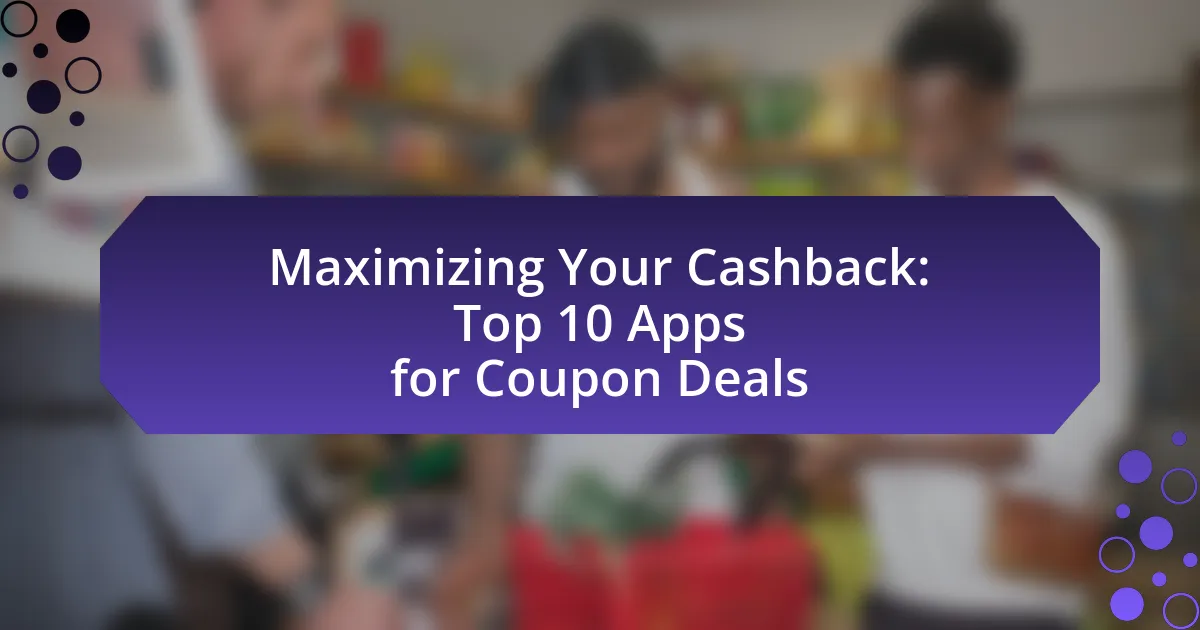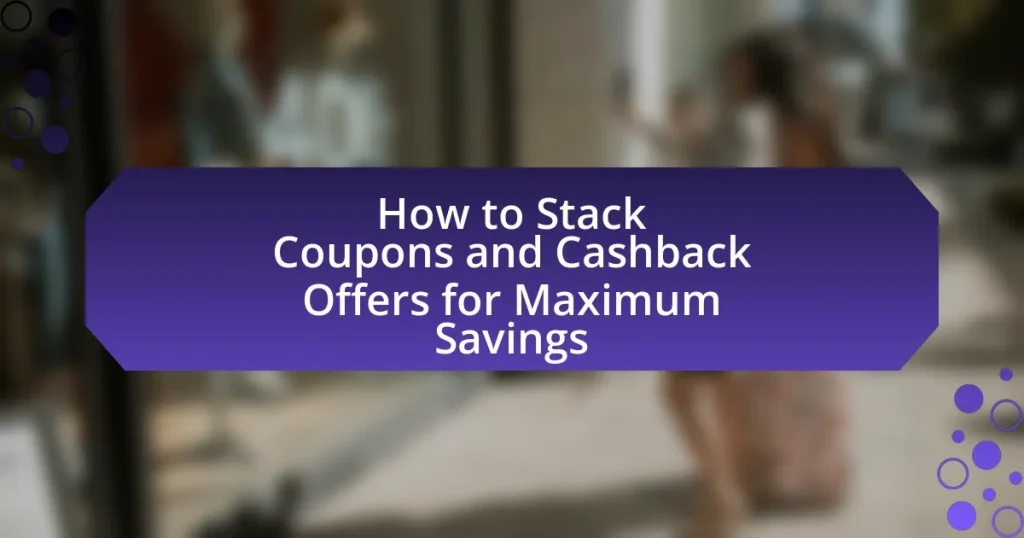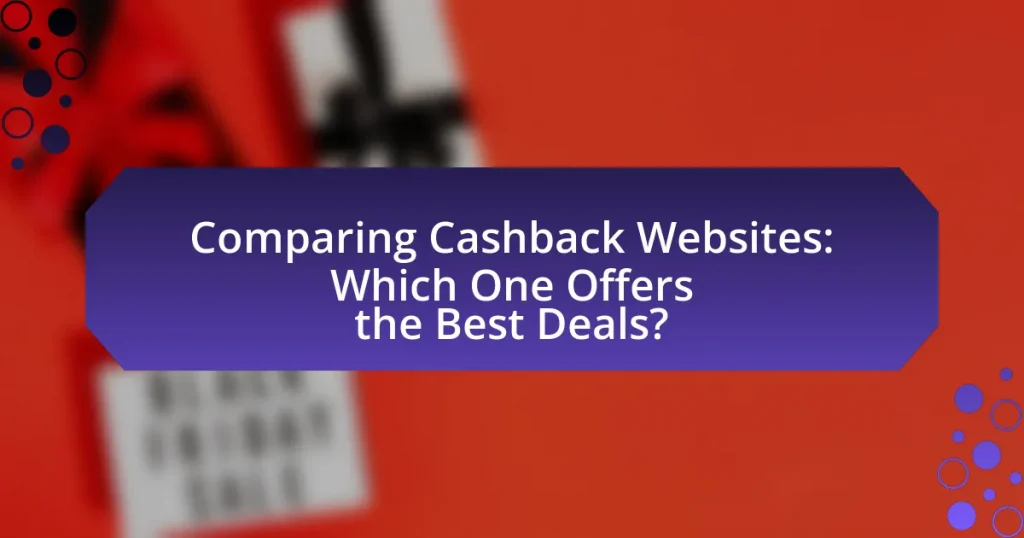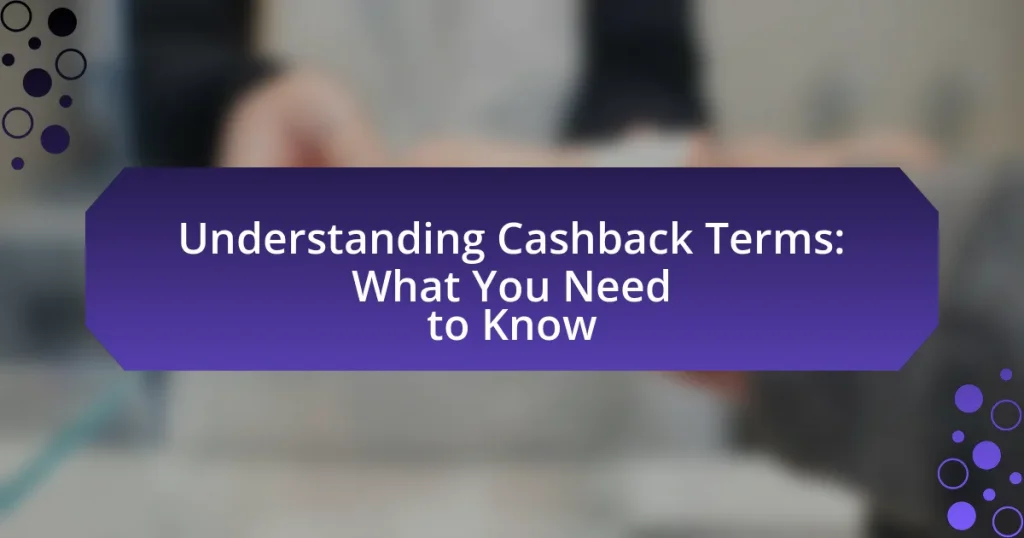Cashback apps are mobile applications that enable users to earn cash rewards based on their purchases, partnering with retailers to provide incentives for shopping. This article explores the purpose and functionality of cashback apps, detailing how they generate revenue and the various types of cashback offers available. It also highlights the advantages of using cashback apps over traditional coupons, the top ten cashback apps for coupon deals, and essential criteria for selecting the right app. Additionally, strategies for maximizing cashback earnings, common mistakes to avoid, and best practices for effective use of these apps are discussed, providing readers with comprehensive insights into enhancing their shopping experience and savings.
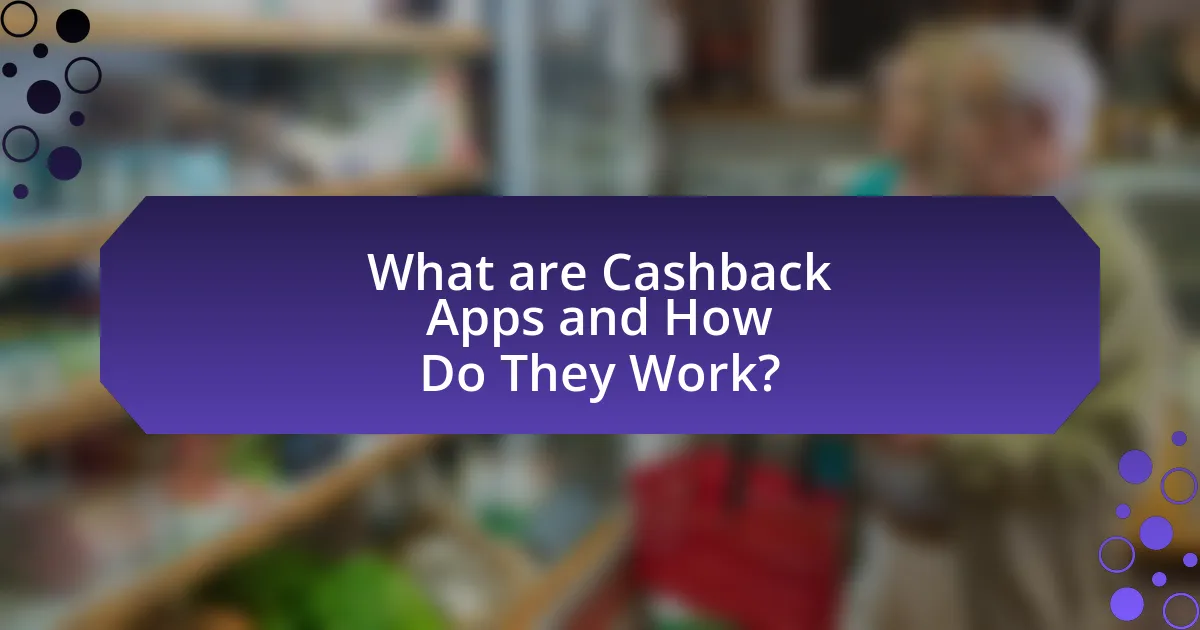
What are Cashback Apps and How Do They Work?
Cashback apps are mobile applications that allow users to earn a percentage of their purchases back as cash rewards. These apps work by partnering with retailers to offer users cashback incentives for shopping at specific stores or for purchasing certain products. When a user makes a purchase through the app or uploads a receipt, the app tracks the transaction and credits the user’s account with the agreed-upon cashback amount. For example, a user might earn 5% cashback on a grocery purchase, which is then credited to their account for future withdrawal or use. This model benefits both consumers, who save money, and retailers, who gain increased sales and customer loyalty.
What is the purpose of cashback apps?
The purpose of cashback apps is to provide users with a percentage of their spending back as a reward for making purchases through the app. These apps facilitate savings by allowing consumers to earn money on everyday purchases, incentivizing them to shop at partnered retailers. For instance, a study by the National Retail Federation found that 79% of consumers use cashback offers to save money, highlighting the effectiveness of these apps in promoting consumer spending while rewarding users financially.
How do cashback apps generate revenue?
Cashback apps generate revenue primarily through partnerships with retailers, earning a commission on sales made through their platforms. When users make purchases via these apps, the retailers pay a percentage of the sale to the app as a referral fee. For instance, Rakuten, a popular cashback app, has reported that it earns a significant portion of its revenue from these retailer partnerships, which can range from 1% to 10% of the transaction value. Additionally, some cashback apps may also offer premium memberships or advertising services to brands, further diversifying their revenue streams.
What are the different types of cashback offers available?
There are several types of cashback offers available, including flat-rate cashback, tiered cashback, and promotional cashback. Flat-rate cashback provides a consistent percentage back on all purchases, such as 1% or 2%. Tiered cashback offers varying percentages based on spending thresholds, rewarding higher spending with increased cashback rates. Promotional cashback is often temporary and tied to specific products or retailers, offering enhanced rates for a limited time. These types of cashback offers cater to different consumer spending habits and preferences, making them appealing for various shopping scenarios.
Why should you use cashback apps for coupon deals?
Using cashback apps for coupon deals allows consumers to maximize their savings by earning money back on purchases. These apps often provide additional discounts on top of existing coupons, effectively increasing the total savings. For instance, a study by the National Retail Federation found that 79% of consumers use coupons, and combining these with cashback offers can lead to an average savings increase of 20% per transaction. This dual approach not only enhances the value of coupon deals but also incentivizes users to shop more strategically, ultimately leading to greater financial benefits.
What advantages do cashback apps provide over traditional coupons?
Cashback apps offer several advantages over traditional coupons, primarily by providing instant rewards and greater flexibility. Unlike traditional coupons, which often require specific conditions to be met, cashback apps allow users to earn money back on a wide range of purchases without the need for physical coupons or complex redemption processes. For example, users can receive a percentage of their spending back directly into their accounts, which can be more convenient than the limited savings offered by coupons. Additionally, cashback apps frequently feature a broader selection of retailers and products, enhancing the potential for savings across various shopping categories. This versatility is supported by the growing trend of digital transactions, with a report from Statista indicating that the global mobile payment market is expected to reach $12.06 trillion by 2025, further validating the shift towards cashback solutions.
How can cashback apps enhance your shopping experience?
Cashback apps enhance your shopping experience by providing users with a percentage of their spending returned as cash rewards. This financial incentive encourages consumers to shop more strategically, often leading to savings on everyday purchases. For instance, a study by the National Retail Federation found that 79% of consumers are more likely to shop at stores that offer cashback rewards, demonstrating the effectiveness of these apps in influencing shopping behavior. Additionally, cashback apps often feature exclusive deals and discounts, further maximizing savings and enhancing the overall shopping experience.
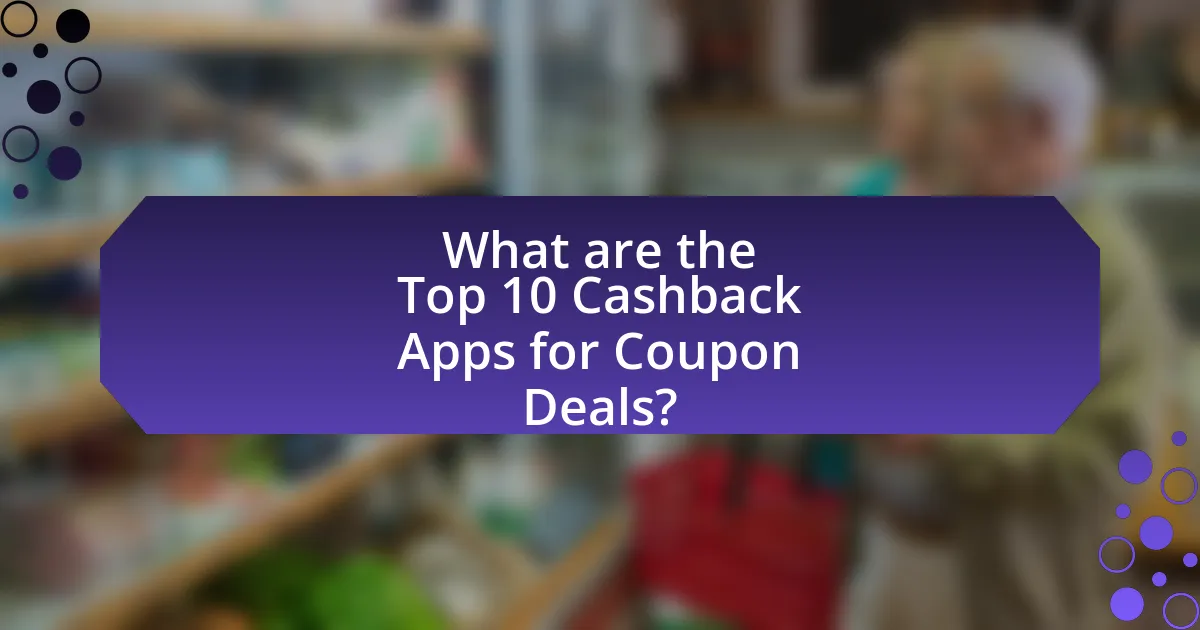
What are the Top 10 Cashback Apps for Coupon Deals?
The top 10 cashback apps for coupon deals are Rakuten, Ibotta, Honey, Dosh, Fetch Rewards, Swagbucks, TopCashback, MyPoints, Shopkick, and CouponCabin. These apps provide users with opportunities to earn cashback on purchases made through their platforms, often in conjunction with coupon deals. For instance, Rakuten offers up to 40% cashback at various retailers, while Ibotta allows users to earn cashback by submitting receipts for qualifying purchases. Honey automatically applies coupon codes at checkout, enhancing savings further. Each app has unique features and partnerships that maximize cashback opportunities for users.
What criteria should you consider when choosing a cashback app?
When choosing a cashback app, consider the cashback percentage offered, as higher percentages directly increase your savings. Additionally, evaluate the app’s user interface for ease of navigation, which enhances the overall user experience. Check the variety of retailers and categories available, since a broader selection allows for more opportunities to earn cashback. Look into the payout methods, ensuring they align with your preferences, whether through bank transfers, gift cards, or PayPal. Finally, assess the app’s reliability and customer service reputation, as these factors contribute to a trustworthy experience.
How do user reviews impact the selection of cashback apps?
User reviews significantly influence the selection of cashback apps by providing potential users with insights into the app’s reliability, usability, and overall effectiveness. Research indicates that 79% of consumers trust online reviews as much as personal recommendations, highlighting the importance of user feedback in decision-making processes. Positive reviews can enhance an app’s credibility and attract more users, while negative reviews can deter potential users and lead to decreased downloads. Additionally, specific feedback regarding features, customer service, and payout processes helps users make informed choices, ultimately shaping the competitive landscape of cashback apps.
What features are essential in a good cashback app?
A good cashback app must have user-friendly navigation, reliable cashback tracking, and a wide range of partnered retailers. User-friendly navigation ensures that users can easily find deals and redeem cashback without confusion. Reliable cashback tracking is essential for users to monitor their earnings accurately, as studies show that 70% of users prefer apps that provide real-time updates on their cashback status. A wide range of partnered retailers increases the app’s utility, allowing users to earn cashback on various purchases, which is crucial since 85% of consumers are more likely to use an app that offers cashback from their favorite stores.
What are the standout features of each of the top 10 cashback apps?
The standout features of the top 10 cashback apps include unique offerings that enhance user experience and maximize savings.
- Rakuten: Offers up to 40% cashback at various retailers and provides a $10 sign-up bonus for new users.
- Ibotta: Features a user-friendly interface with cashback offers on groceries and allows users to earn bonuses for completing specific tasks.
- Honey: Integrates with online shopping to automatically apply coupon codes and offers a rewards program for users who shop through its platform.
- Dosh: Provides automatic cashback on purchases made with linked credit or debit cards without requiring users to scan receipts.
- Fetch Rewards: Allows users to earn points by scanning grocery receipts, which can be redeemed for gift cards, making it easy to accumulate rewards.
- Swagbucks: Offers cashback for shopping, surveys, and watching videos, providing multiple ways to earn rewards.
- TopCashback: Claims to offer the highest cashback rates by partnering directly with retailers, ensuring users receive the best deals.
- MyPoints: Combines cashback with points for shopping, dining, and completing surveys, allowing users to choose how they want to redeem rewards.
- Shopkick: Rewards users with points for walking into stores, scanning products, and making purchases, which can be redeemed for gift cards.
- Capital One Shopping: Automatically applies coupon codes at checkout and offers rewards for shopping through its platform, enhancing the online shopping experience.
These features collectively make each app distinct, catering to various shopping habits and preferences, thus maximizing cashback opportunities for users.
How does each app differ in terms of cashback rates?
Each cashback app varies significantly in its cashback rates, with some offering higher percentages for specific categories. For instance, Rakuten typically provides 1% to 10% cashback depending on the retailer, while Ibotta offers up to 20% on select grocery items. Similarly, Dosh gives users 2% to 10% cashback at partnered stores, and Honey often features cashback rates around 1% to 5% on various purchases. These differences are influenced by partnerships with retailers and promotional campaigns, which can lead to fluctuating rates.
What unique offers do these apps provide to users?
These apps provide users with unique offers such as exclusive cashback deals, personalized discounts, and loyalty rewards. For instance, many cashback apps allow users to earn a percentage back on purchases made at specific retailers, often exceeding standard coupon savings. Additionally, some apps utilize algorithms to tailor offers based on user shopping habits, enhancing the relevance of discounts. According to a study by the National Retail Federation, consumers can save an average of 10-20% on their purchases through these cashback and coupon apps, demonstrating their effectiveness in maximizing savings.
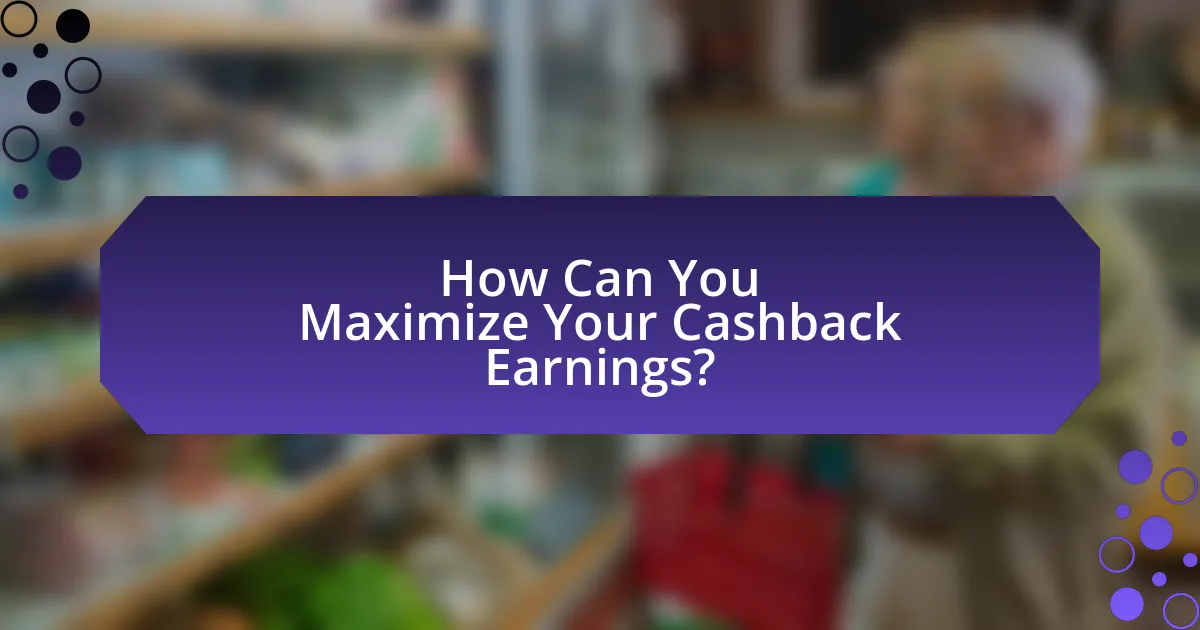
How Can You Maximize Your Cashback Earnings?
To maximize your cashback earnings, utilize cashback apps and credit cards that offer the highest rewards for your spending categories. Research shows that consumers can earn up to 5% cashback on specific purchases by strategically selecting the right platforms and offers. For instance, apps like Rakuten and Ibotta provide significant cashback incentives for shopping at partnered retailers, while certain credit cards offer elevated cashback rates for groceries or gas purchases. By combining these tools and consistently checking for promotions, users can significantly enhance their overall cashback returns.
What strategies can you implement to increase your cashback rewards?
To increase your cashback rewards, utilize cashback credit cards that offer higher percentages for specific categories such as groceries, gas, or dining. Research shows that consumers can earn up to 5% cashback on select purchases with these cards, significantly boosting overall rewards. Additionally, combine cashback apps with in-store purchases to maximize savings; for example, using apps like Rakuten or Ibotta can provide additional cashback on top of credit card rewards. Engaging in promotional offers and bonus categories can further enhance your earnings, as many credit cards periodically offer increased cashback rates for certain spending categories.
How does stacking coupons with cashback offers work?
Stacking coupons with cashback offers allows consumers to combine discounts from both sources to maximize savings on purchases. When a shopper uses a coupon to reduce the price of an item and then also qualifies for a cashback offer on that same purchase, they effectively lower their total cost while receiving a percentage of the purchase price back. For example, if a product costs $100, a $20 coupon reduces the price to $80, and if a cashback offer provides 10% back, the shopper receives $8 after the purchase, resulting in a total effective cost of $72. This method is widely utilized in retail and online shopping, as many platforms and apps support both coupon stacking and cashback incentives, enhancing the overall savings experience for consumers.
What timing considerations should you keep in mind for maximizing cashback?
To maximize cashback, consider timing your purchases around promotional events and seasonal sales. Retailers often offer increased cashback rates during holidays, Black Friday, and back-to-school seasons, which can significantly enhance your earnings. For example, during Black Friday, cashback offers can reach up to 10% or more, compared to the usual 1-5% during regular shopping periods. Additionally, using cashback apps during these peak times can yield higher rewards, as many apps partner with retailers to provide exclusive deals.
What common mistakes should you avoid when using cashback apps?
Common mistakes to avoid when using cashback apps include not reading the terms and conditions, which can lead to misunderstandings about eligibility and payout processes. Users often overlook expiration dates on offers, resulting in missed opportunities for cashback. Additionally, failing to track purchases can lead to unclaimed rewards, as cashback may not be automatically credited. Not comparing cashback rates across different apps can also result in lower returns, as some apps may offer better deals for specific retailers. Lastly, users should avoid using multiple cashback apps for the same purchase, as this can violate terms and lead to disqualification from rewards.
How can you ensure you don’t miss out on cashback opportunities?
To ensure you don’t miss out on cashback opportunities, regularly use cashback apps and websites that aggregate offers from various retailers. These platforms, such as Rakuten and Ibotta, provide notifications for new deals and cashback percentages, allowing users to stay informed about the latest opportunities. Research indicates that consumers who actively engage with these apps can earn an average of 3% to 10% cashback on their purchases, depending on the retailer and the specific offer. By consistently checking these platforms before making purchases, you can maximize your savings and take full advantage of available cashback deals.
What are the pitfalls of relying solely on cashback apps for savings?
Relying solely on cashback apps for savings can lead to several pitfalls, including limited savings potential and overspending. Cashback apps typically offer a percentage back on purchases, which may not equate to significant savings compared to traditional budgeting methods. Additionally, users may be incentivized to spend more to earn cashback, resulting in higher overall expenses rather than actual savings. A study by the National Endowment for Financial Education found that 60% of consumers using cashback apps reported spending more than they intended, highlighting the risk of overspending. Furthermore, cashback offers can be limited to specific retailers or categories, restricting flexibility and potentially leading to missed opportunities for better deals elsewhere.
What are some best practices for using cashback apps effectively?
To use cashback apps effectively, users should consistently compare offers across multiple platforms to maximize their rewards. By checking various cashback apps before making a purchase, users can identify the best available cashback rates, which can vary significantly between apps. Additionally, linking cashback apps to credit cards that offer extra rewards on specific categories can further enhance savings. Research indicates that consumers can earn up to 5% more in cashback by strategically using credit cards alongside cashback apps. Regularly reviewing app promotions and participating in bonus offers can also lead to increased earnings, as many apps provide limited-time deals that can significantly boost cashback percentages.
